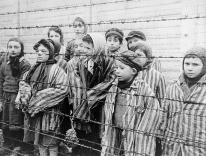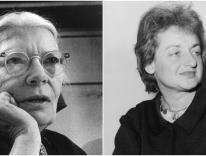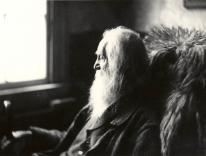This article was originally published in the September 28, 2001 issue of Commonweal.
Like most people, I had no idea as I walked to work September 11 that four planes had been hijacked and one of them had slammed into the north tower of the World Trade Center. When Quanda Williams, Commonweal’s administrative assistant, asked me as I passed her desk if I’d heard about the plane that hit the World Trade Center, I dismissed the incident as a tragic accident. Maybe a small plane had clipped one of the towers. That was 9 a.m. As is routine for me, I sat down in front of my computer, opened the New York Times web page, and sipped coffee. The page took longer than usual to load. Something was amiss.
By the time the page loaded, United Flight 175 had already been driven through the south tower. Looking for news, I frantically went from site to site, trying to get video of the events. CNN, no. MSNBC, nothing. Paul Kane, our business manager, suggested the BBC. Bingo. They had live coverage. As the office gathered around the computer screen, the horrors unfolded. “They hit the Pentagon.” “The south tower just collapsed.” The rumors proliferated. “A third unidentified plane circling New York. They can’t find it.” All of us in the office stood watching the monitor, the video of the south tower’s collapse played again and again. Hands covered mouths. Then the other tower went. At low resolution we saw the building fall.
The phones were useless for much of the day, but as the hours passed more information came. A terrorist attack, for sure. No third plane circling Manhattan. Everything closed: subways, commuter rail, bridges and tunnels, highways. The island went on lockdown. By the end of the workday, almost everyone had left. Staff members who live outside Manhattan had an uncertain journey ahead of them after limited outbound transit resumed. I was nervous about leaving, feeling decidedly agoraphobic.
The walk home, thirteen blocks away, like so much that day, was surreal. I had never heard Broadway so quiet. Downtown traffic was sparse. Pedestrian traffic was diminished. Many people huddled around television sets in restaurants and bars. Several people cried openly, on other people’s shoulders, into cupped hands. Everyone was in shock, watching the ground as they walked more slowly than usual. I needed to stop at an ATM, and hated having to do so. The triviality of the act left me feeling cheap and disconnected. Once I reached my block, I ducked into church, slouching into a pew in the back corner. I knelt, tried to pray, but found I couldn’t. Four others were present with me. We wept together.
When my cellular phone finally came back up at 8 p.m., I had fifteen voicemail messages. The first was from a good friend. “Grant, this is Izzy Casaletto. It’s like nine [a.m.] or something.... I am standing outside the Hoboken PATH train, looking up at the World Trade Center, and the top twenty floors are belching smoke. This is one of the most bizarre things I’ve ever seen. Wow. I actually think I can see somebody...I don’t know...I don’t know what it is....” Izzy boarded a train and rode into the city. When he exited Christopher Street in lower Manhattan, he saw the chaos up close.
“Traffic and people were stopped. Everyone was mesmerized by what they saw. People were hysterical, holding each other up, helping the elderly and children, frantically trying their cell phones.” Then he watched the south tower collapse. “I was in shock. I couldn’t hear anything around me. Everything seemed to happen in slow motion. In a matter of seconds, I saw a car accident, an old woman hyperventilating, a young woman vomiting, and strangers embracing.”
Tasha Rifkin, another friend, watched both towers collapse from New Jersey. Her experience was like Izzy’s: “It was as though I watched it happen in slow motion and fast-forward at the same time.... How many people had just died right before my eyes?” After the north tower fell, “the skyline looked blank. There was nothing there but smoke.” Commonweal’s production editor Tiina Aleman, who lives in Jersey City directly across the river from the twin towers, reflected on their demise, “Two old friends were murdered in front of my eyes. Along with a visceral sadness I feel regret that I didn’t look at or really think of them more often. They were part of the landscape. It’s the same regret as when a loved one dies and you feel you didn’t have the chance to tell her that you loved her or how much she mattered in your life. Now I better understand why people need to have open-casket wakes.”
Since the attack, downtown Manhattan has remained one giant closed casket. On Friday the fourteenth, like a lot of New Yorkers, I felt impelled to go downtown to pay my respects. At Canal Street and the West Side Highway, emergency workers, national guardsmen, camera crews, citizens, and tourists were gathered. Some cheered as the rescue crews passed in ambulances, squad cars, and fire engines. Others stood silently watching the trucks go by, filled with debris, the bent steel visible and still recognizably part of the towers. There were the refrigeration trucks as well. They carried the dead.
On Saturday I returned. Part of the financial district had been opened to pedestrian traffic, accessible by subway only. There were five of us in the subway car as we passed directly under the wreckage. Riding slowly through the well-lit, clean, deserted World Trade Center subway station without stopping caused more than a little uneasiness as we all made eye contact without speaking. When the E train finally stopped at the Broadway-Nassau station, my friend and I weren’t so sure we wanted to see the body.
First, there was the smell. The smoke was acrid. All of the rescue workers and many of the pedestrians wore facemasks, but we weren’t prepared. After an hour I wished I had one. Next was the dust. Everything was covered in a film, which, up close, looked like paper pulp. The dust had a fibrous quality, almost reflective, a putty tone that colored the scene sepia, Iike an old movie.
The crowds were small and silent. Then they began to grow, people with cameras and dogs. One Great Dane was outfitted in an American flag; he seemed oblivious to the funeral pyre. Everyone stared at the void. Pointing and whispering, getting as close as the National Guard and the NYPD would allow. As I continued up Ann Street, the sights on the ground were almost as staggering as those in the sky. One young man used his empty film canister to scoop up dust that had settled on a ledge. He saw that I saw him, quickly capped the container, and moved on. A family of four stood outside a fenced-in parking lot, which was strewn with papers from the World Trade Center. Friday’s rain had washed much of the dust and papers from the lot, but a shadow, a kind of photographic negative, remained—eight and one-half by eleven rectangles of dust. I looked more closely at the family, and saw the father poking a broomstick through the fence. His toddler daughter squatted beneath him, tiny hands thrust through the links, grabbing papers as her father pulled them toward her. Her mother collected them, one hand on a stroller that held a baby who watched this paper-gathering intently. Farther down the fence, two tourists had snatched up a memo from the lot. One held it up as the other filmed it; the address caught my eye: One World Trade Center, ninety-second floor.
The walk uptown was long. The subways had shut down again, so hundreds of us filed east and walked quietly up through Chinatown. I stared at my feet for much of the way, the images replaying: the BBC video; the column of smoke where the towers stood; One Liberty Plaza, ready to collapse, its curved contours in stark contrast to the straight lines of buildings beside it. The dust on the tips of my shoes—bits of the World Trade Center and its contents. I couldn’t help but imagine the horror I had not witnessed. I couldn’t help but think of the firefighters, police, volunteers. How are they doing it? The dust on the tips of their shoes, on their faces, hands, in their eyes and lungs.
What was next? War? What kind? I could not banish the questions, the images, the need to know what to feel and think, or how to pray when it did not seem that God, Emmanuel, was with us.
Please email comments to [email protected] and join the conversation on our Facebook page.
Previous Story
The Innocents
Next Story
A Beautiful Day, A Horrible Event


